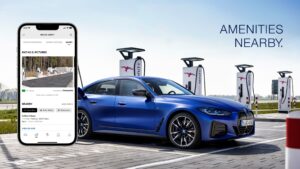MEPs quiz air quality experts and motor industry representatives at public hearing on reducing emissions beyond 2020
Luxury car manufacturer Daimler today said Europe’s car industry would support more stringent real-world driving tests for cars.
Addressing a public hearing at the European Parliament in Brussels this afternoon (December 4), Daimler AG’s Klaus Land — speaking on behalf of the European Automobile Manufacturers Association (ACEA) — gave the industry’s view on bringing in regulatory real-world driving emissions tests for vehicles.
ACEA has proposed RDE (real driving emission) regulations to be implemented in a two-step processRequirements currently exist for vehicles to be tested for levels of air pollution emissions in laboratories. However, real-world driving tests of vehicles have often shown higher levels of air pollution emissions as these tests better replicate how motorists use their vehicles.
As such, some elements of EU emissions regulations now require real-world testing for vehicles, with plans to bring in further real world testing in future, including for nitrogen oxide emissions from light-duty diesel vehicles.
Mr Land said such regulations would have to be defined on a legal basis to ensure the same stringency for RDE (Real Driving Emissions) tests across the board, and emphasised that the industry “is not blocking or delaying RDE — we are supporting it”.
Instead, Mr Land said that the industry was proposing a RDE package that “will lead to a simultaneous air quality benefit” and it is of “comparable” stringency to the Euro VI RDE programme.
He explained that due to necessary “massive” hardware changes at car manufacturing plants to bring in new RDE tests, the industry’s stance is that the only way an RDE regulation can be brought in is via a gradual ‘2-step’ approach, including an intermediate and a final step.
This, Mr Land said, would lead to the ACEA’s proposed RDE regulation being introduced from perhaps shortly after 2020, but he added that meeting EU NO2 limits would depend on the rate of introduction of RDE compliant vehicles on roads, which “is not in the control of the industry”.
Health
Entitled ‘EU air quality policy: Reducing national emissions beyond 2020’, the evidence session was chaired by Conservative MEP Julie Girling, and saw a number of other environmental and health experts quizzed on improving Europe’s air quality in future.
Marie-Eve Heroux, technical officer for air quality and noise at the World Health Organisation (WHO)’s European centre, began by outlining the current health impacts of air pollution, which is estimated to result in the premature deaths of 430,000 people in Europe each year.
She explained that any improvement in air quality would result in an improvement in health, and advocated the implementation of the Commission’s proposed Clean Air Package of proposed regulations, which have been earmarked for review by new Commission President Jean-Claude Juncker (see airqualitynews.com story).
Map showing annual mean concentrations of PM2.5 in Europe in 2010 (red dots signify the highest levels of pollution)Ms Heroux said that implementing the package as proposed would prevent 58,000 premature deaths annually by 2030 and reduce the average statistical life expectancy per person due to air pollution from 8.5 months in 2005 to 5.3 months in 2025.
She explained that implementing the Clean Air Package also had huge economic benefits, as it would lead to benefits in people’s health that are 12 times the cost of air pollution abatement.
Environment
The environmental perspective on European air pollution was provided by air quality expert Crister Agren, director of Swedish environmental organisation AirClim, who also argued that neither existing regulations nor current Commission proposals were enough to limit environmental damage from air pollution, such as eutrophication.
Mr Agren said: “Health damage and environmental damage are much too high and will be much too high under current legislation or the Commission’s proposed legislation.
He added: “You have to combine both national and international measures in order to achieve what we want to achieve.”
However, Mr Agren said that current proposed measures to reduce climate-impacting carbon emissions in the EU by 40% would also have the co-benefit of reducing air pollution, as it would “automatically reduce sulphur emissions”.
In addition, Mr Agren argued that much more work needed to be done to tackle shipping emissions of sulphur and particularly nitrogen oxides, which he said have continued to increase since 1980.
He said there were “still no effective measures to reduce NOx” from shipping in Europe, and called for NOx emission control areas to be expanded “to include sea areas as well”.













